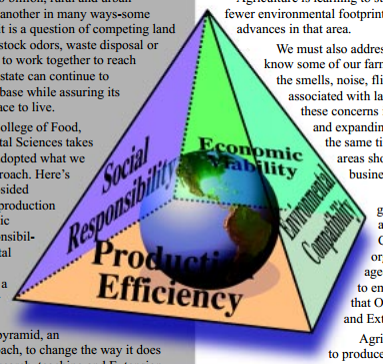Chapter 7: Weed Science Research
7.4 Prioritizing Research Investments
We will now conclude this chapter with a quick discussion about how governments, universities, commodity groups, companies, etc. decide how to prioritize the research they do, making best use of limited resources. We mentioned earlier in this chapter how each of these groups have a common goal of meeting the global needs of food, feed, fiber and energy, but they vary in their approaches and objectives.
In the 1990’s The Ohio State University College of Food, Agricultural and Environmental Sciences took a step back to re-examine how they were making investment decisions. This quote from the dean at the time sums up what they determined.
“Today’s agriculture pays as much attention to the environment and society as to yields and the bottom line. This does matter as much to farmers as it does to the general public.” – Dean Bobby Moser (1991)
Based on feedback from stakeholders, it was determined that the ultimate goals were to achieve…
- Efficient agriculture production
- Environmentally sound practices
- Food safety

From this an Ecological Paradigm Model was created. It is depicted in this pyramid diagram. As had been followed in the past, 3 key goals of agricultural research were to achieve:
- production efficiency
- economic viability
- environmental compatibility
A 4th component was added to the Ecological Paradigm Model:
- social responsibility
They realized that when all four of these elements were considered when making priorities in research investments, it better met the needs of society and did so in a more sustainable fashion.
Review and Reflection